CarEdge saved me over 4,500 dollars on a brand new Honda Pilot. I can't say thank you enough.
Price intelligence
Find a wide range of vehicle listings with market insights on new and used listings near you.
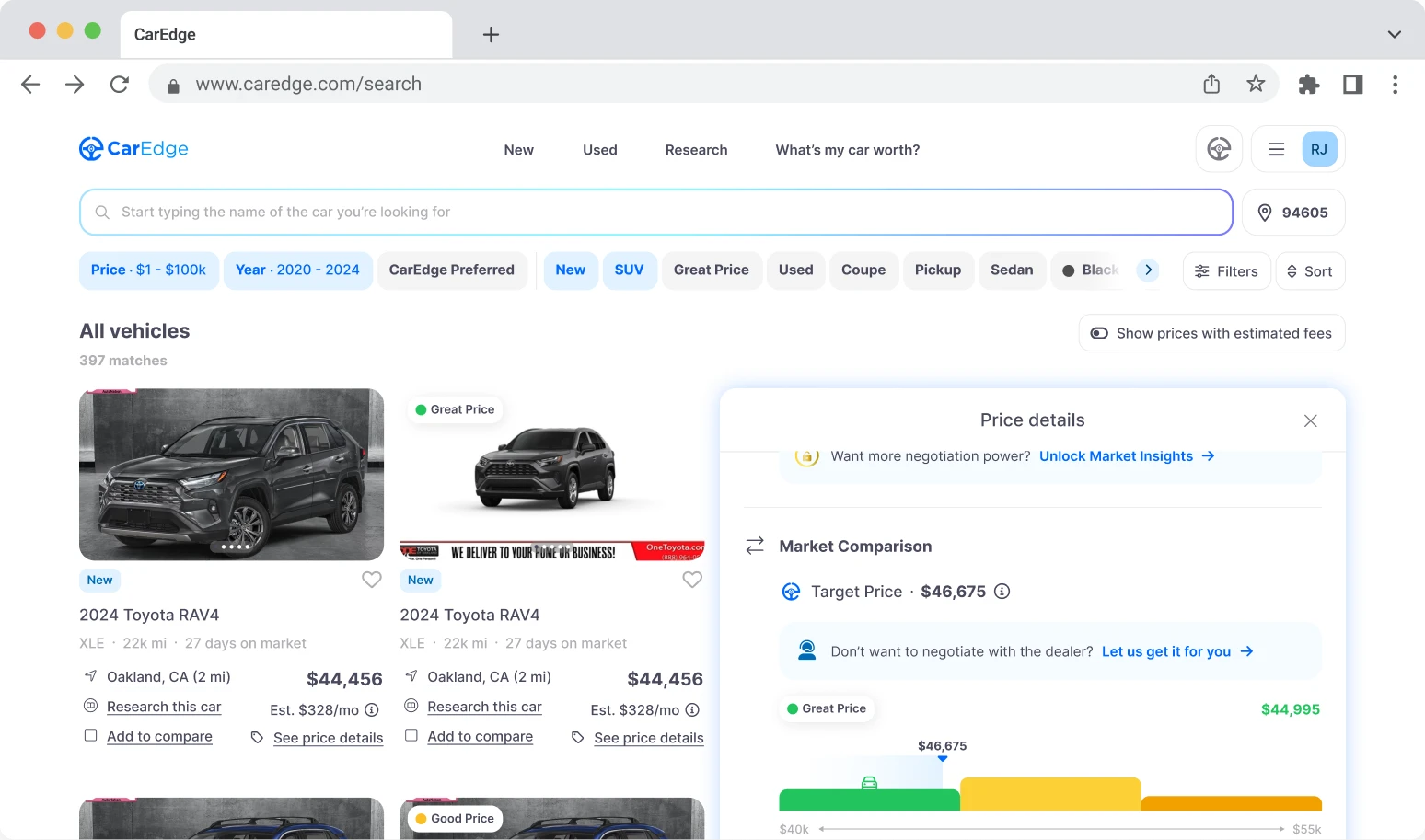

Help us personalize your CarEdge experience — it only takes a second.
Your answers help us personalize your CarEdge journey — we’ll follow up with tips and next steps that match your buying timeline.

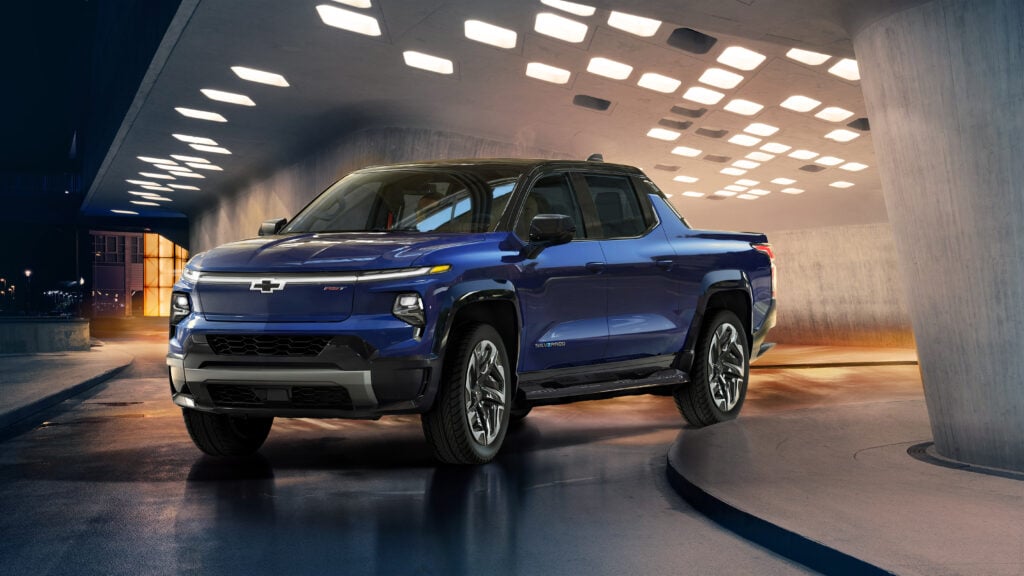
Imagine using your vehicle as a backup generator for your home, or even to help a stranded motorist reach their destination. Electric vehicles claim just 5% of new vehicle market share in America, however record gas prices are spurring renewed interest in the EV lifestyle. One of the most sought-after features of electric vehicles is bidirectional charging. Also known as vehicle-to-load, or V2L, tomorrow’s cars literally have the power to do so much more than drive us around. Here’s everything you need to know about bidirectional charging in electric vehicles.

During typical use, electric cars draw electricity from the grid, and then consume that energy to power their electric motors. What if you could reverse the flow of electricity back into the grid? Better yet, imagine making money doing it. The future of mobility is about to get weird. Cars are already becoming rolling computers, so it only makes sense that they are capable of revolutionizing the world beyond the driver’s seat.
Simply put, bidirectional charging is the ability for electrical current to flow in both directions: from the grid to the vehicle (to charge the battery pack), and also from the car to the grid, another car, or household appliances.
When an electric vehicle is charged, alternating current (AC) from the grid is converted to direct current (DC) using the car’s built-in converter. To send electricity out of the battery pack and back into the grid or into another electronic device, electricity must first convert back to AC. This is done using an inverter. Vehicles that are manufactured with an inverter are already equipped with the hardware needed for bidirectional charging.
The numbers are in: see average EV prices and the latest EV market share update.
Vehicle to grid (V2G) capability enables an electric car to return electricity to the grid. V2G can help supply energy at times of peak grid demand. In most of the world, electricity demand peaks during the afternoon and early evening. Peak demand causes demand charges, which are higher rates for usage.
Vehicle to grid capability offers a way around demand charges, to the benefit of consumers and grid operators alike. The vehicle’s owner avoids demand charges or even sells electricity to the grid, and the grid gains a new source of electricity when it’s needed the most.
Although V2G is still in its infancy, the technology opens up the possibility of future revenue streams for everyday EV drivers and even automakers. Imagine if your car could make you money while it’s parked in the garage. Rental and ride-hailing fleets could double the revenue from their autonomous vehicles by serving as power suppliers to the grid. It’s a game changing option that is coming to cars in the near future.
V2L allows an electric vehicle’s battery pack to power appliances such as power tools, a coffee machine, cooking equipment, laptops, or even a party. More importantly, vehicle-to-load capability serves as the ideal emergency power source during times of need, such as following a natural disaster or power outage. Some cars, such as the 2022 Hyundai IONIQ 5, can output 3.6 kilowatts via V2L functionality. That is a LOT of power, surely enough to power an entire campsite or family-sized outdoor event.
Naturally, one of the first uses of bidirectional charging that comes to mind is powering one’s home during a power outage. Indeed, vehicle-to-home (V2H) power supply is under development, and it’s even featured in a few of today’s production EVs. It’s important to note that accessories and professional installation of associated hardware are required before any EV can power an entire home. Still, it looks like V2H capability is a real option for EV shoppers to consider in 2022. More on today’s V2H EVs below.
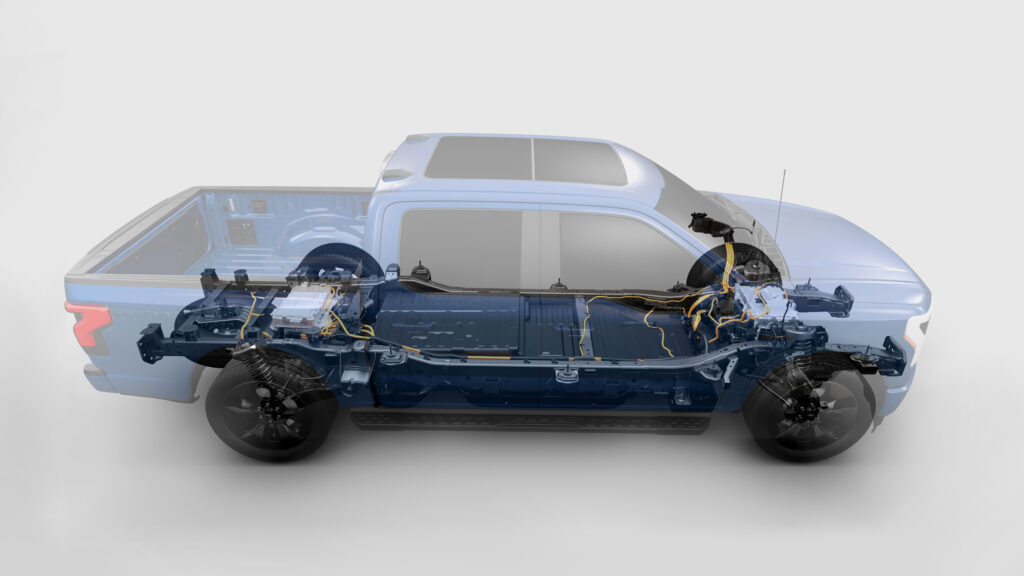
The short answer is that it depends on the battery chemistry. One of the latest battery chemistry types to be employed in EVs is lithium-iron-phosphate batteries, or LFP. LFP batteries quickly rose to prominence due to their remarkable ability to withstand the stresses of repeated charging cycles without severe battery degradation.
Other battery chemistries lose range over time as the battery is charged and discharged (referred to as a charging cycle). Even charging to 100% too often can reduce the life of some battery types. LFP batteries are the perfect companion for bidirectional charging, especially vehicle-to-grid. They handle frequent charging and discharging like a champ.
Other battery types in development are engineered with bidirectional charging capability in mind. Ford’s partnership with SK Innovation resulted in a more environmentally-friendly battery chemistry suitable for the frequent charge cycles of bidirectional charging.
Our EV extended warranty provides peace of mind. Batteries and other electrical components are covered! Get a quote for your EV today.
| Max Power Output | Date Available | V2L Capable? | V2H Capable? | V2G Capable in 2022? | |
| Chevrolet Silverado EV | 10.2 kW | 2023 | Yes | Yes | No |
| Ford F-150 Lightning | 9.6 kW | Mid 2022 | Yes | Yes | No |
| Hyundai IONIQ 5 | 3.6 kW | Now | Yes | No | No |
| Genesis GV60 | 3.6 kW | Spring 2022 | Yes | No | No |
| Genesis G80 | 3.6 kW | 2022 | Yes | No | No |
| Kia EV6 | 1.9 kW | Now | Yes | No | No |
| Toyota bZ4X | TBD | Mid 2022 | Yes | No | No |
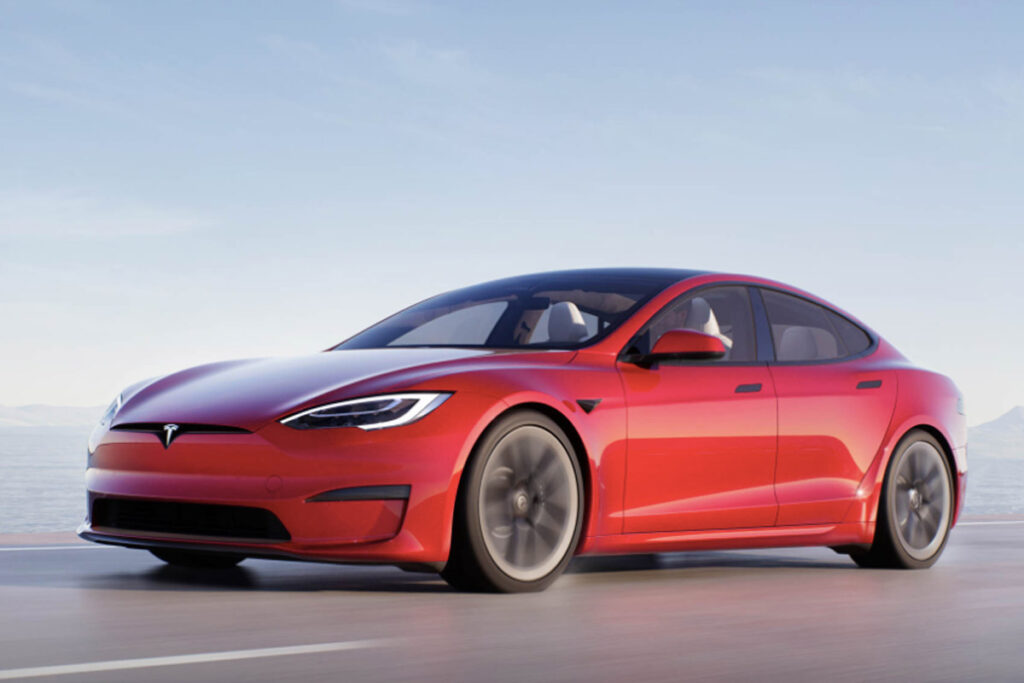
For the time being, no Tesla models are capable of bidirectional charging. It’s possible (even likely) that all 2022 Tesla models have the necessary hardware for V2G or V2L, or V2H. However, Tesla has alternative motives for delaying bidirectional charging rollout for as long as possible. If Tesla vehicles became V2H-capable, they would render the $10,500 Tesla Powerwall home battery obsolete!
A few curious Tesla owners have inquired about modifying their cars to become capable of bidirectional charging. The response from Tesla was a warning that doing so would void the vehicle’s battery warranty. So for now, don’t expect Tesla EVs to power your home or appliances.
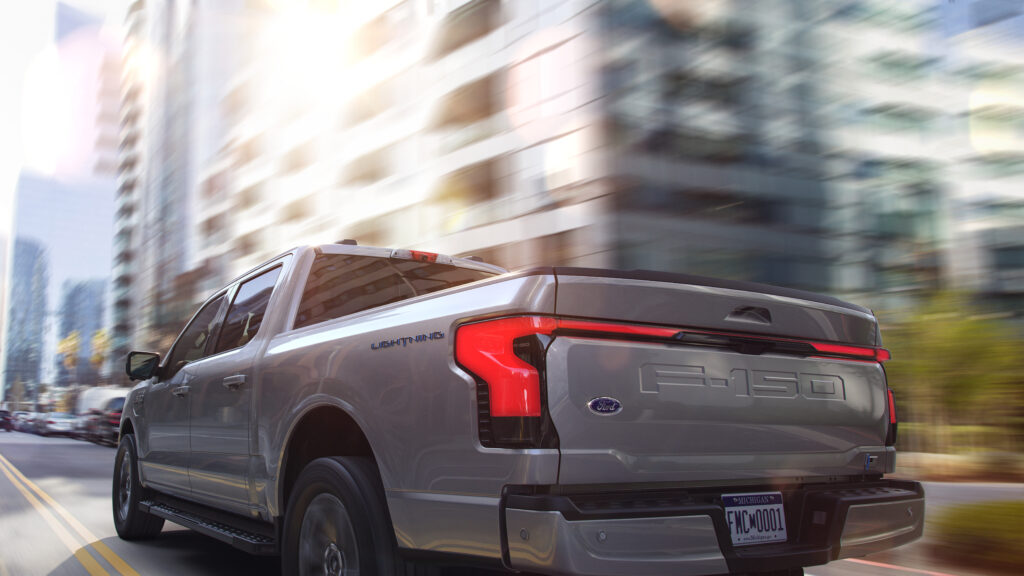
Ford’s F-150 Lightning is widely marketed as the answer to power grid anxieties. Ford Intelligent Backup Power is an available accessory to the popular F-150 Lightning electric truck. With 200,000 reservations in the books, the Lightning is already sold out through 2023.
The F-150 Lightning contains unique battery chemistry that strengthens charging cycle durability while also requiring fewer rare earth metals. Ford’s partner, SK Innovation, has developed a new battery cathode that uses 90% nickel, and 5% each of manganese and cobalt. The new battery chemistry also reduces the harmful environmental and ethical impacts of cobalt mining.
Ford’s engineers designed the new electric F-150 with V2H in mind. In the electric truck segment that’s rapidly gaining steam, automakers are looking for bold ways to make their truck a compelling buy.
“F-150 Lightning with available Ford Intelligent Backup Power can provide power and security during an electrical outage – the first electric truck in the U.S. to offer this capability; in the future, new features will offer additional ways to manage energy use and potentially save on energy costs.”
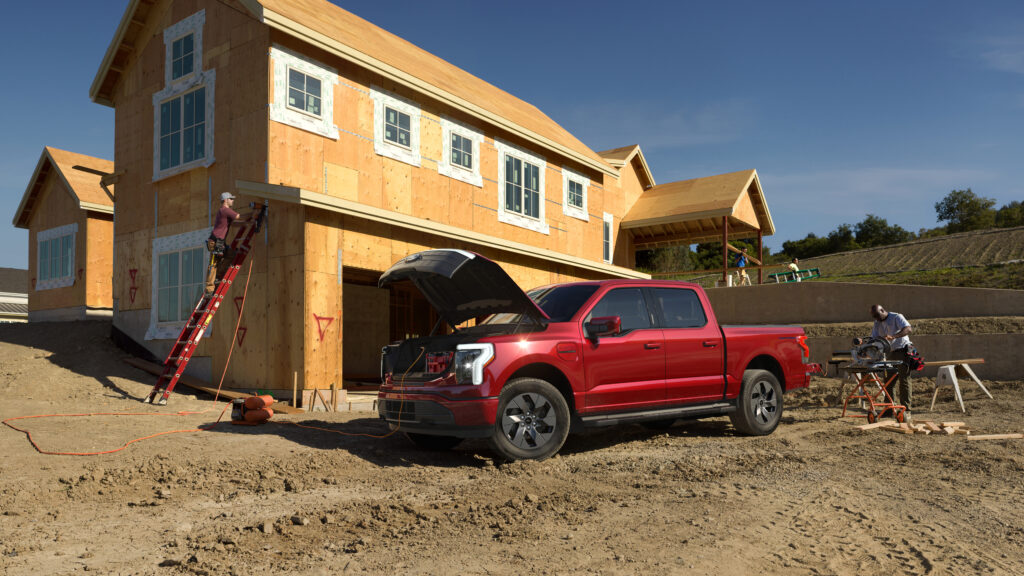
“The F-150 Lightning extended-range battery system can store 131 kilowatt-hours of energy and deliver up to 9.6 kilowatts of power in a cleaner, quieter, more efficient way versus gasoline-powered generators, and with greater capacity than many wall battery units. F-150 Lightning can also offer lower-cost energy storage in a product customers already own – their truck.”
How long should an electric truck be able to power an entire home? 12 hours? Three days? Ford says that depending on power demand, some homes could be powered for seven days with the F-150 Lightning’s extended range battery.
“With Ford Intelligent Backup Power and the Home Integration System, F-150 Lightning automatically kicks in to power your home if the grid goes down. Once power is restored, the system automatically reverts back to utility power. Based on an average U.S. home at 30 kilowatt-hours of use per day, F-150 Lightning with extended-range battery provides full home power for up to three days, or as long as 10 days when used in conjunction with solar power or rationing.”
Learn more about Ford Intelligent Backup Power in Ford’s official announcement.
The average
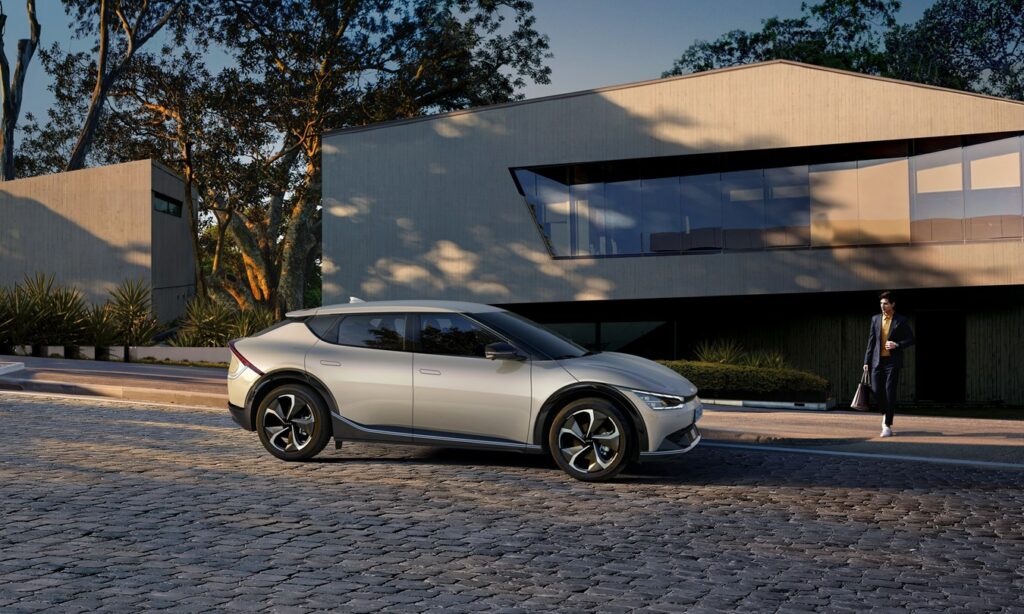
Bidirectional charging is yet another way that the electrification of the auto industry is transforming vehicle ownership. In five years (or less), trucks will be judged for how many days they can power your home, and crossovers will be expected to power household appliances with ease.
The fact that vehicle-to-home capability relies on the professional installation of accessories sold separately seems to fly under the radar for many. While vehicle-to-load may become a standard feature that we all take for granted in a decade’s time, retrofitting a home for V2H power will remain a lofty expense for the foreseeable future.
What do you think about bidirectional charging? Do you plan to power your home with your car in the future? Let us know what you think about automaker’s bold plans for EVs in the comments below, or share your thoughts with the CarEdge Community at caredge.kinsta.cloud.
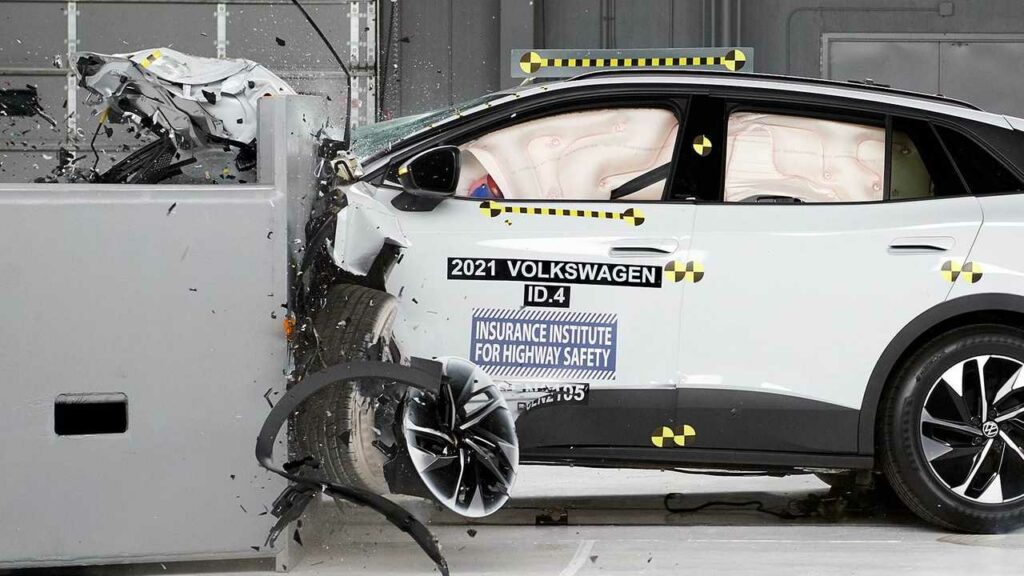
Update 3/8/22: As the Ukraine crisis continues, automakers continue to see impacts. The possibility of a looming raw material shortages is beginning to weigh on semiconductor chip production forecasts, with the real possibility of an even worse chip shortage on the horizon. Metals used in everything from vehicle frames to catalytic converters are soaring to record prices due to the importance of Russia in the global supply. More on the latest developments below.
The ongoing crisis in Eastern Europe is affecting global automakers more than expected. As the conflict drags on into March, automotive suppliers in Russia and Ukraine are experiencing severe disruptions. Logistical nightmares are tumbling out of control as airspace restrictions are enforced. Now, cyberattacks are adding insult to injury. Here’s every automaker impacted by the conflict in Ukraine.
Transport between Europe and countries home to Asian auto manufacturers is facing unprecedented disruption as air space restrictions over Eastern Europe halt 20% of the world’s air cargo. In retaliation to bans imposed on Russia, Russia has reciprocated by banning European carriers from entering Russian airspace, which stretches 5,600 miles from Europe to East Asia. There have also been reports of Russian-based cargo ships being refused refueling at various ports in protest to the invasion of Ukraine.
Furthermore, automotive parts manufacturers located in Ukraine are shuttered, and those in Russia are subject to the effects of sanctions.
Raw materials used in the manufacturing of vehicle frames and electric vehicle batteries are soaring to record highs. Aluminum, palladium, platinum and nickel are most immediately impacted by the Ukraine-Russia conflict. About 40% of the world’s palladium is sourced from Russia. Palladium is used in catalytic converter production. Automotive News reports that auto industry suppliers are well aware of the impending impacts on manufacturing.
“When it comes to metals, Russia companies are major suppliers to Germany. In 2020, they accounted for 44 percent of Germany’s nickel imports, 41 percent of its titanium, a third of its iron, and 18 percent of its palladium.
With production of 108 million tons last year, Russia is the world’s fifth-largest producer of iron ore, according to Credit Suisse, supplying European steelmakers who now face higher prices and possible difficulties procuring the metal.”
Palladium now sits at $3,440 an ounce, 60% above where it was two months ago. Automotive-grade aluminum also hit a record high on March 7. Nickel is at a 15-year high.
Neptune Global chief executive Chris Blasi said that someone will bear the brunt of the record prices and shortage. “There is no other option beyond palladium and platinum for catalytic converters, and you cannot build a car without a catalytic converter,” Blasi said.
Around 70% of the neon used by automotive industry suppliers is sourced from raw materials in Ukraine. Neon is used in the lasers that are critical to the production of semiconductor chips. The ongoing chip shortage may become even worse if the Russia conflict extends beyond a few months. For now, chip makers are relying on existing supplies. Automotive News detailed the neon supply concerns to keep an eye on here.
Although many policy and conflict experts expected worse by now, cyberattacks have disrupted automakers in the past week, causing some plants to briefly close. The automakers themselves are not the only ones at risk. Suppliers critical to the vast automotive supply chain have been hit with cyberattacks, and the result has been felt in recent days.
Volkswagen Group, the parent company of Audi, sources a large portion of its wire harnesses from a Ukrainian supplier. Audi announced production cuts that result from these supply chain difficulties. VW Group brands are among the many who have stopped exports to the Russian market.
The critical wire harnesses that BMW uses for its vehicle production are sourced from suppliers in Western Ukraine. The closure of the suppliers and the associated supply chain bottlenecks have now caused production cuts at BMW’s German plants. BMW also halted production at a factory in Kaliningrad, a Russian exclave situated between Poland and Lithuania. BMW has also suspended vehicle exports to the country.
On March 2, Ford announced a production stop at the Ford Sollers production facility, in which it maintains a 50% stake in partnership with Russian automaker Sollers.
Ford has a 50% stake in three Russian automotive plants. Ford Sollers is the Russian joint venture between Sollers of Russia and Ford. Most of the production at Ford Sollers is for the Ford Transit and similar commercial vehicles. A company spokesperson said that employee safety is their priority, and that effects of sanctions and supply chain disruptions are being assessed.
GM says they are fortunate to have limited supply chain risks as a result of the Ukraine conflict. Still, they are stopping exports to Russia. The move is unlikely to have major impacts for GM, as they sell less than 3,000 vehicles in Russia annually. GM ended production in Russia seven years ago.
On March 2, Honda joined other automakers in pausing sales and exports to Russia. Volvo was the first to make the move.
Interfax News reported that a Russian Hyundai official announced the suspension of output at its plant in St. Petersburg. On March 4, the automaker cited supply issues in its decision to prolong the plant closure. Hyundai is a major force in Russia, selling over 10,000 vehicles per month on average (12% market share).
The UK automaker announced that it is ceasing shipments of vehicles to Russia, effective immediately. Last year, Jaguar Land Rover sold 6,900 vehicles in Russia. A spokesperson said Jaguar Land Rover’s priority was “the wellbeing of our entire workforce and their families, as well as those within our extended network”. The statement went on to cite global supply chains and sanctions. “The current global context also presents us with trading challenges, so we are pausing the delivery of vehicles into the Russian market and continually monitoring the situation on behalf of our global customer base.”
Global auto manufacturer Magna announced the closure of its six Russian plants on March 7, citing “the unfortunate situation in Ukraine.” Magna Spokeswoman Tracy Fuerst shared the company’s support for the Ukrainian people. “Although we don’t have facilities in Ukraine, we have the privilege of working with thousands of Ukrainian colleagues in our Magna operations around the world as well as those from Russia who share the same values of human rights, diversity and inclusion,” Fuerst said. The Canada-based automotive supplier builds parts and entire vehicles for brands ranging from Toyota to Mercedes-Benz.
Mercedes-Benz sources multiple components from suppliers in Ukraine. Mercedes-Benz will reduce production at some European plants this week due to supply shortages. Mercedes sources many components from suppliers in Ukraine. Production shifts will see cuts, but the automaker does not expect to fully stop production outside of Russia. Mercedes is halting production at its Russian plant and pausing the export of passenger cars and vans to the country. They cite sanctions as the cause of the move.
Following Volvo’s lead, Mitsubishi announced that it will halt production and sales of their vehicles in Russia, effective March 1st. Mitsubishi has 2.2% market share in Russia.
Stellantis established a task force to identify disruptions from the ongoing conflict. Stellantis CEO Carlos Tavares said that the automaker has 71 employees in Ukraine. They are ensuring compliance with the rapidly-evolving sanctions in place.
Stellantis, the result of a merger between Fiat Chrysler and Peugeot, produces and sells the Peugeot, Citroёn, Opel, Jeep, Fiat brands in Russia. In January, Stellantis announced that they will begin exporting Russian-made commercial vehicles to Western Europe. The latest developments will likely put a hold on their plans. In 2021, Stellantis brands had just 1% market share in Russia.
On March 2, Toyota announced an indefinite pause in production at its Russian factory. Toyota produces about 80,000 vehicles at its St. Petersburg plant. They are also pausing imports into Russia.
All 14 domestic factories were closed on February 28 after critical supplier Kojima was taken down by a cyberattack that included a threatening message. The supplier was hit with a virus soon after Japan’s government announced support for Ukraine.
Toyota announced that it would resume production at all facilities in Japan the following day. Kojima was unable to operate, and Toyota said they do not stockpile the parts made by the supplier. Toyota relies on 60,000 suppliers, an immense vulnerability that Toyota is surely rethinking.
Volkswagen Group, which includes Audi, Bentley, Cupra, Porsche, Lamborghini, Skoda, SEAT and Volkswagen, continues to face supply chain constraints. VW branded vehicles are produced using wire harnesses sourced in Ukraine. As reserve supplies run low, more production cuts are possible. Production of Volkswagen’s electric vehicles is halted because of supply chain disruptions. The Volkswagen ID.4, ID.3 and new ID.5 electric vehicles are especially affected.
On Thursday March 3, Volkswagen said it is suspending its Russian business until further notice. No cars from VW Group brands will be exported to Russia. VW delivered 216,000 cars in Russia in 2021, about 2.4% of Volkswagen Group’s global vehicle sales.
As supply chain vulnerabilities surface, VW says it will idle the massive Wolfsburg plant. The VW Zwickau and Dresden plants are also closed for the week. Prior to the Ukraine-Russia disruptions, there was already a 6-12 month wait for buyers ordering a Volkswagen ID.4 in North America.
On February 28, Volvo became the first automaker to cease shipments of new vehicles to Russia. The Swedish automaker (owned by Geeley of China) cited their desire to avoid possible conflicts with the rapidly changing sanctions being imposed on Russia by the European Union, United States, and allies. Volvo sold 9,000 cars in Russia in 2021.

The Russia-Ukraine conflict adds a new dimension to the production delays and supply chain disruptions that have been dragging on for well over a year. The latest chip shortage forecasts show a delayed recovery, despite earlier optimism. So far in 2022, AutoForecast Solutions has increased their projection of vehicles lost in production due to the chip shortage by 63%, from 767,700 to 1,253,100.
Severe sanctions on Russia and instability in Ukraine may persist far longer than originally expected. Now that cyber security vulnerabilities are being targeted, sporadic production halts are becoming the new normal. Automakers impacted by the Ukraine conflict are in for prolonged uncertainty. Automakers may be entering a period of disruption being the new normal, even as the chip shortage will eventually wind down.

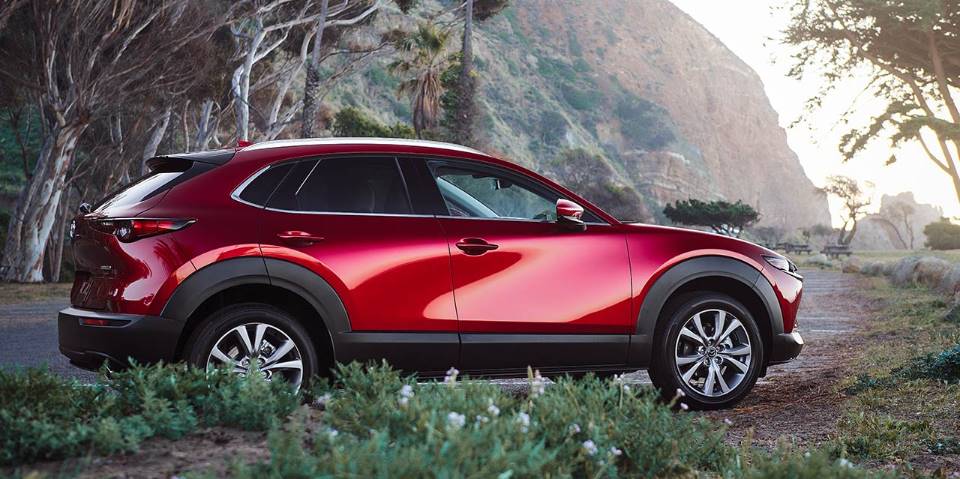
Every year, Consumer Reports sends dozens of car models through half a million miles of track testing and data collection. The non-profit organization buys all of its test cars anonymously from dealers and does not accept free samples from automakers. The Consumer Reports testing regimen includes more than 50 scientific tests on every vehicle it evaluates.
The respected organization combines their findings with survey data from their 6 million subscribers to publish their annual Consumer Reports brand rankings. The pinnacle of the Consumer Reports’ annual rankings is the overall scores tallied for each brand.
In 2022, Consumer Reports scored 32 automotive brands based on their overall scores in reliability, consumer satisfaction, road testing and safety. This year’s rankings bring surprising changes and a new leader.
Subaru climbed two spots to number one in the 2022 Consumer Reports brand rankings. The Japanese automaker known for standard all-wheel drive dethroned Mazda with an overall score of 81. The 2022 Subaru Forester has ranked among Consumer Reports’ top picks for the 9th consecutive year. Fascinatingly, six of the top 10 brands in 2022 are Japanese automakers: Subaru, Mazda, Honda, Lexus, Toyota and Infiniti.
The highest ranking American automakers in 2022 are Buick (72), Chrysler (71), and Dodge (67). Cadillac and Ford just barely passed the test, scoring 63 and 62 overall. Chrysler and Dodge have been known for reliability issues in the past, so it’s great to see them improving. Likewise, BMW’s luxury vehicles have long been known for their maintenance expenses, so to achieve #3 overall is a notable feat.
As more automakers make advanced safety features standard on their models, the weight of Consumer Reports’ safety scoring is separating the winners from the losers.
With Subaru now number one overall, Mazda falls to second place, followed by BMW, Honda, Lexus, Audi, Porsche, Mini, Toyota, and Infiniti. Here are the overall brand scores from Consumer Reports.
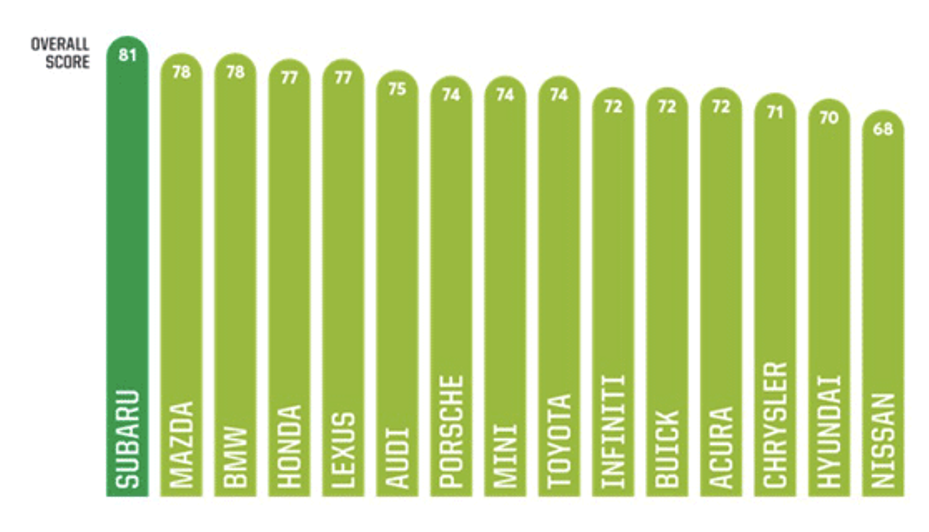
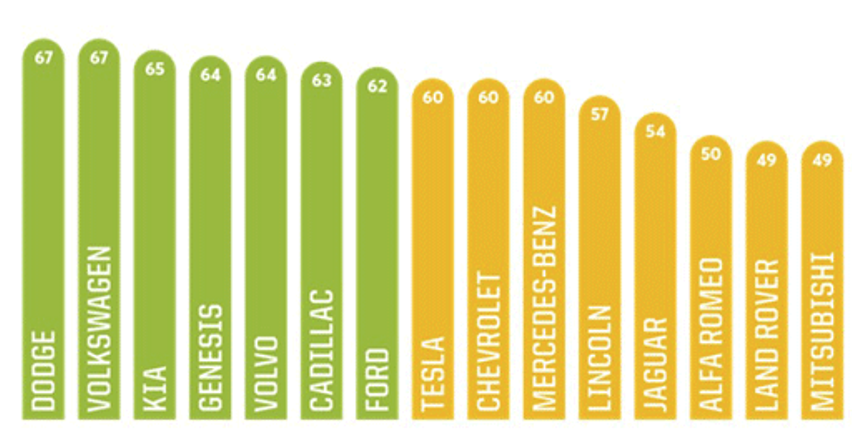
Tesla fell seven spots to #23 in Consumer Reports’ overall brand rankings. In a press release, Consumer Reports cited the so-called ‘yoke’ steering wheel in the refreshed Tesla Model X and Model S as causes for concern and consumer dissatisfaction. Jake Fisher of Consumer Reports told Automotive News that Tesla’s tendency to push the limits is partly to blame. “It dropped more than any other automaker, kind of due to their own decisions,” he said.
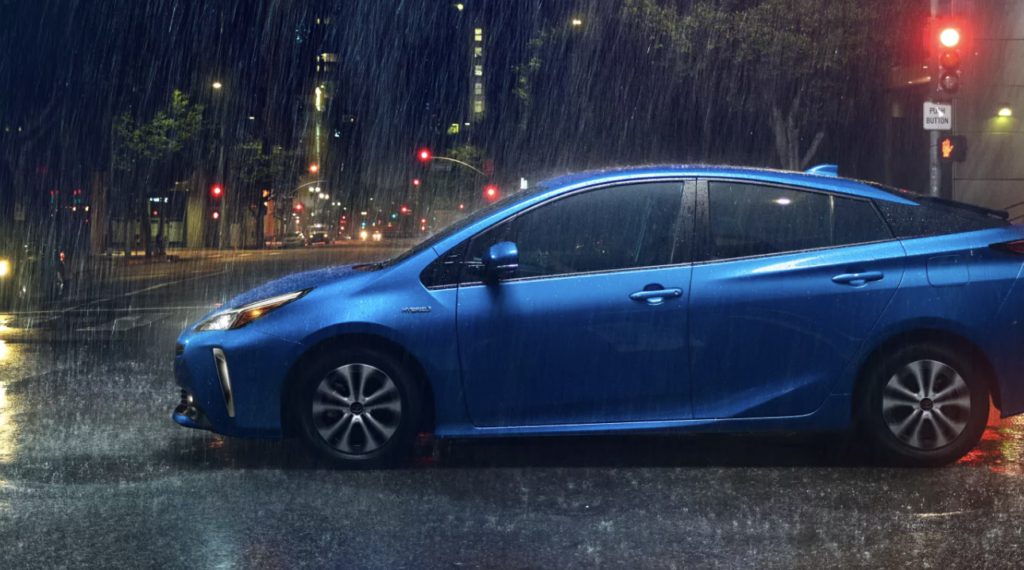
Everyone’s talking EVs, however Toyota’s hybrid powertrains remain the top-rated low-emissions choice at Consumer Reports. As part of their focus on low-emissions transportation, CR included the Green Choice designation for the second year. Toyota (9th overall) leads the Green Choice awards with 11 hybrid and plug-in hybrid models on the list.
What’s particularly interesting about this is the fact that Toyota has yet to release a single fully-electric vehicle. Their first, the 2023 Toyota bZ4X, is due to arrive later this year.
You can access the detailed 2022 Consumer Reports brand rankings with a membership to the non-profit.

The ongoing chip shortage has tightened new vehicles supply to the extent that many dealers are adding enormous markups to their inventory. CarEdge previously reported that both General Motors and Ford have sent sternly-worded memos to their dealerships warning against the anti-consumer practices that automakers are hearing about from frustrated car buyers. Now, Hyundai and Genesis are getting serious about dealers tarnishing their brands with outrageous markups.
Automotive News reports that North American branches of Hyundai and Genesis are fed up with overly aggressive pricing strategies. The letter obtained by Automotive News warns U.S. dealers against damaging the brand’s reputation with markups that mislead buyers and balloon transaction prices.
While Hyundai Motor Group acknowledges that the MSRP is just that, the suggested retail price, they have tools they are not afraid to use if U.S. dealers don’t change their pricing practices. The letter reportedly floats reductions in future allocations, advertising benefits and the loss of other incentives as possible repercussions.
The letter to American Hyundai dealers specifically calls out the trickery of advertising one price online, and then surprising customers with a higher price once it’s time to start paperwork.
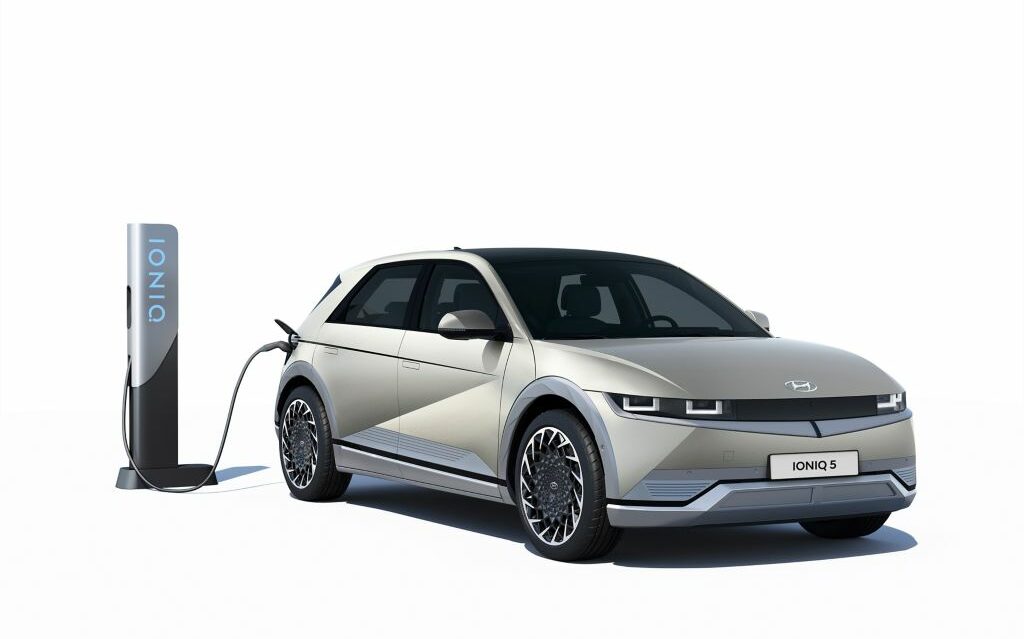
Sales executives from the North American divisions of Hyundai and Genesis noted that angry consumers brought this to their attention.
“We are writing now because with great regularity our customers around the country are voicing displeasure with certain pricing practices which, if left unchecked, will have a negative impact on the health of our brand,” the executives said in the letter.
Finding a new vehicle at MSRP is a challenge no matter what brand you’re in the market for, however Hyundai has seen some of the most outrageous dealership markups of all. One buyer in Massachusetts had worked out a deal over the phone for a new, all-electric Hyundai IONIQ 5. The salesperson he worked with committed to selling the EV at MSRP. The customer then drove three hours to the dealership, only to be met by a different sales manager who demanded a $5,000 markup for the same car.
Fortunately, this customer was able to find a better deal elsewhere, but many first-time Hyundai customers are not willing to give the brand second chances. Kia and Hyundai markups are among the largest in 2022, according to Edmunds. Hyundai transaction prices average $1,498 above sticker price; and for Genesis it was $1,603 higher. Hyundai markups are among the largest out there, and corporate leadership knows that is a bad look for the brand.
It’s refreshing to see an automaker playing the long game with customer relations. The letter warns dealers that once inventory stabilizes, customers will remember how they were treated.
“Once supply and demand come into greater equilibrium, customers will feel that they were overcharged for their vehicle and thus look to other brands the next time they are shopping. We believe that the risk of losing customers and potential future customers far overweighs any short-term gains to be had from what customers describe as unfair pricing.”

Hyundai and Genesis aren’t the first automakers to threaten their dealers with strongly worded memos. Earlier this year, GM and Ford dealers received letters from their leadership telling them to treat customers more fairly and equitably. The industry-wide push to electric vehicles brings higher production costs and lower margins, so higher prices may become the norm. Still, consumers expect a fair deal, and the automaker’s MSRP typically sets expectations.
Could these warnings be signs of dealer’s weakening grip on car sales in America? It’s a real possibility. You know which automaker actually increased sales in 2021? Tesla, the brand that dares to go without the dealership model. Rivian, Lucid and Fisker are promising to follow Tesla’s lead into the direct-to-consumer sales model.
If dealers won’t respect consumers or automaker guidance, automakers will be thinking a lot harder about alternative sales avenues that benefit consumers and their brands alike. When there’s an inefficiency as big as this, the free market tends to find a solution rather quickly. We’ll be following the developing situation closely.
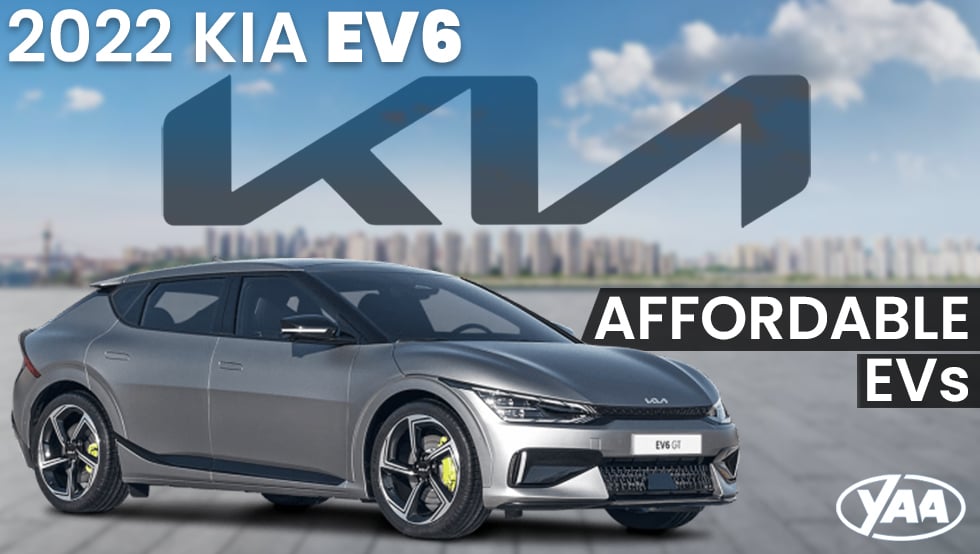
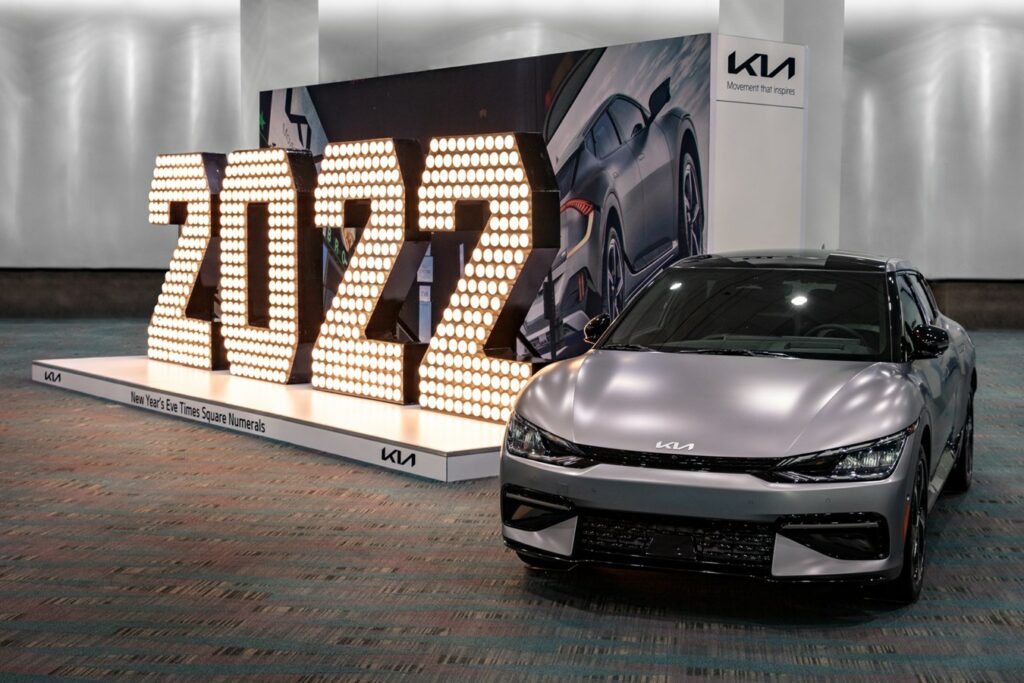
The average new vehicle sells for nearly $50,000, but not every vehicle costs the same to maintain and operate. Fuel economy, reliability, insurance, and maintenance needs are just some of the factors that determine the total cost of ownership for any vehicle. Automakers have made it clear that they’re bringing EVs to the masses, however cheap electric cars remain elusive.
Consumers in the market for an affordable vehicle in 2022 are presented with diverse options, including a larger selection of electric vehicles than ever before. EV‘s are no longer just for tech nerds. People who had never imagined themselves in an electric vehicle are making the switch simply for fuel savings.
However, it remains true that the majority of electric vehicles carry luxury price tags. It’s unlikely you’ll hear anyone say there are “cheap electric cars,” however there are affordable EVs. Here are five affordable electric vehicles that drivers love in 2022.
Starting at $40,760
240 – 260 miles of range
Learn more: CarEdge Review of the Volkswagen ID.4
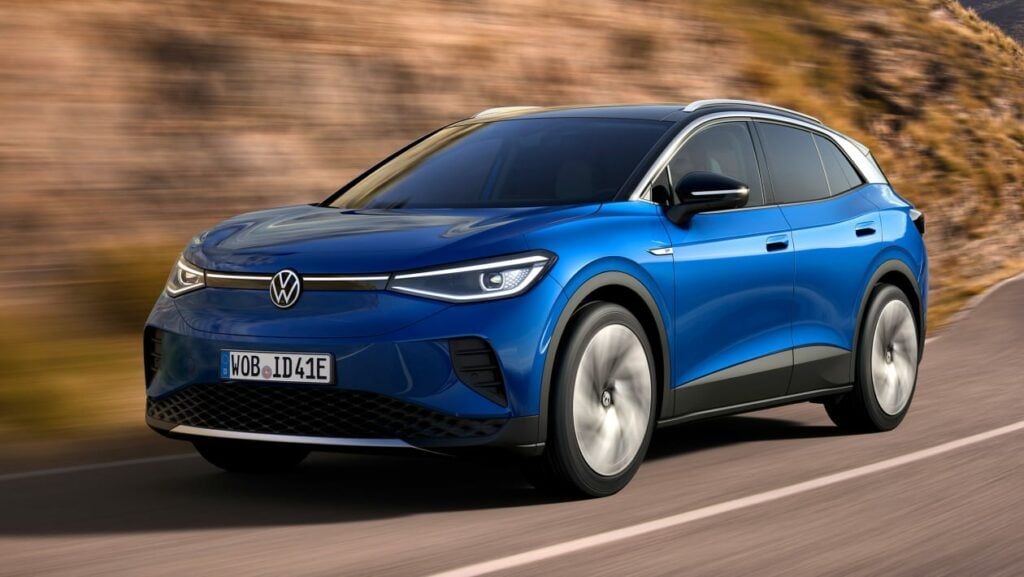
Pro:
Cons:
If you’re in the market for a great electric vehicle that will get you from A to B in comfort and confidence, the 2022 Volkswagen ID.4 should be on your short list. Capable performance, great safety ratings and a spacious cabin make the ID.4 a great place to be for the price point.
The 2022 ID.4 can go the distance, leaving range anxiety behind for the most part. Dozens of real-world range tests show that even on the highway at 70 mph, the ID.4 gets well over 200 miles on a charge. In city driving, closer to 300 miles is likely.
2022 updates are bringing bidirectional charging, plug-and-charge, increased range, quicker charging and major over-the-air updates to the ID.4. Even 2021 models will get new features via OTA updates this summer. Learn more about the game-changing capabilities of OTA updates here.
When it comes time to charge, you can either juice up at home overnight, or take advantage of 3 years of free Electrify America charging with unlimited miles. For frequent travelers, the Electrify America incentive can be worth a few thousand dollars. At a fast charger, charging to 80% takes about 30 minutes.
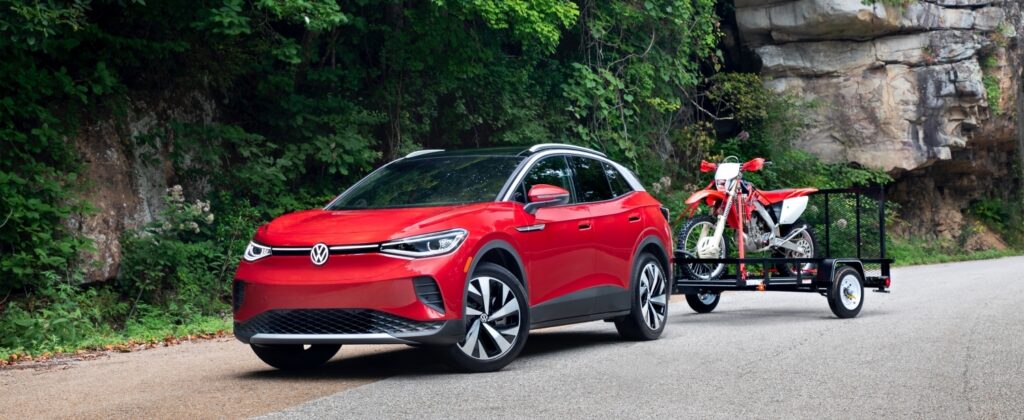
The all-wheel drive version of the ID.4 is where this crossover really shines. Adding another motor to the front axle increases horsepower to 295 with 339 lb-ft of torque and a very satisfying 0-60 time of just 5.4 seconds. However, it’s not quite a car you’d take to the track. The handling is well-tuned for attacking winding roads in inclement weather, although it maintains a more family-oriented demeanor.
The 2021 ID.4 earned a Top Safety Pick+ rating from the Insurance Institute for Highway Safety, and a five-star rating from the National Highway Traffic Safety Administration’s rigorous crash testing. CarEdge recently detailed all electric vehicle safety ratings in 2022.
The Volkswagen ID.4 is about as good as it gets for its use case. For the frugal-minded, It’s a particularly compelling car in the base Pro trim with rear-wheel drive (MSRP $40,760). Volkswagen’s EVs still qualify for the $7,500 federal EV tax credit in the US, which can turn the entry-level ID.4 into a $34,000 purchase. That’s an amazing value in today’s market.
Starting at $40,900
232 – 310 miles of range
Learn more: CarEdge Review of the Kia EV6

Pro:
Cons:
If you’re a techie who demands the latest and greatest that automakers have to offer, but don’t have the budget to buy an extravagant Lucid Air or Mercedes EQS, the Kia EV6 and its platform sibling the Hyundai IONIQ 5 just might be what you’re looking for.
Kia and Hyundai partnered up to engineer the new E-GMP battery and powertrain platform. The first two models to feature this advanced architecture are the Hyundai IONIQ 5 and the all-new Kia EV6. Both of these crossovers offer ultra-fast charging, impressive range, and over-the-air update capability for just over $40,000.
The 2022 Kia EV6 has a premium feel to it, and that’s something we’re still learning to expect from Kia. Aggressive looks on the outside are met with a welcoming, spacious interior. The cabin is open and airy.
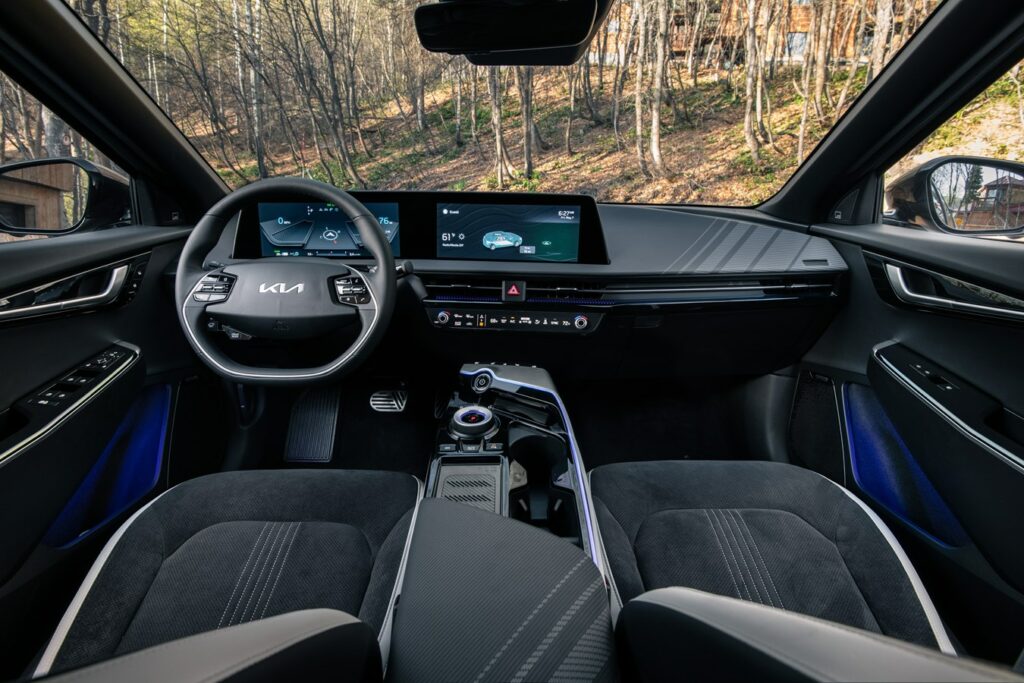
The EV6’s front dash consists of dual 12.3” screens, one for infotainment and another for the instrument cluster. Higher trims also include an augmented reality heads-up display that projects driving directions and basic info onto the windshield within the driver’s line of sight.
The Kia EV6 is no slouch; it can hustle with a heavy foot. All-wheel drive variants produce 313 hp and a 0-60 time of 5.1 seconds, but range drops to 274 miles on a charge. Longer range rear-wheel drive trims still reach 60 mph in just 7.3 seconds. For perspective, that’s about two seconds quicker than the popular Subaru Forester.
With a starting MSRP around $42,000 with destination, the 2022 EV6 represents incredible value for leading-edge tech. It even has faster charging and longer range than similarly priced Tesla models.
The greatest advantage the Kia EV6 has over any Tesla model is that the EV6 qualifies for the federal electric vehicle tax credit. Buyers can save up to $7,500 on their federal taxes if they purchase a Kia EV. Tesla and GM brands are no longer eligible since they’ve already sold greater than 200,000 electric cars.
If you’re a fan of the specs but not the aggressive looks, the Hyundai IONIQ 5 may be the perfect compromise.
Starting at $40,925
220 – 303 miles of range
Learn more: CarEdge Review of the Hyundai IONIQ 5
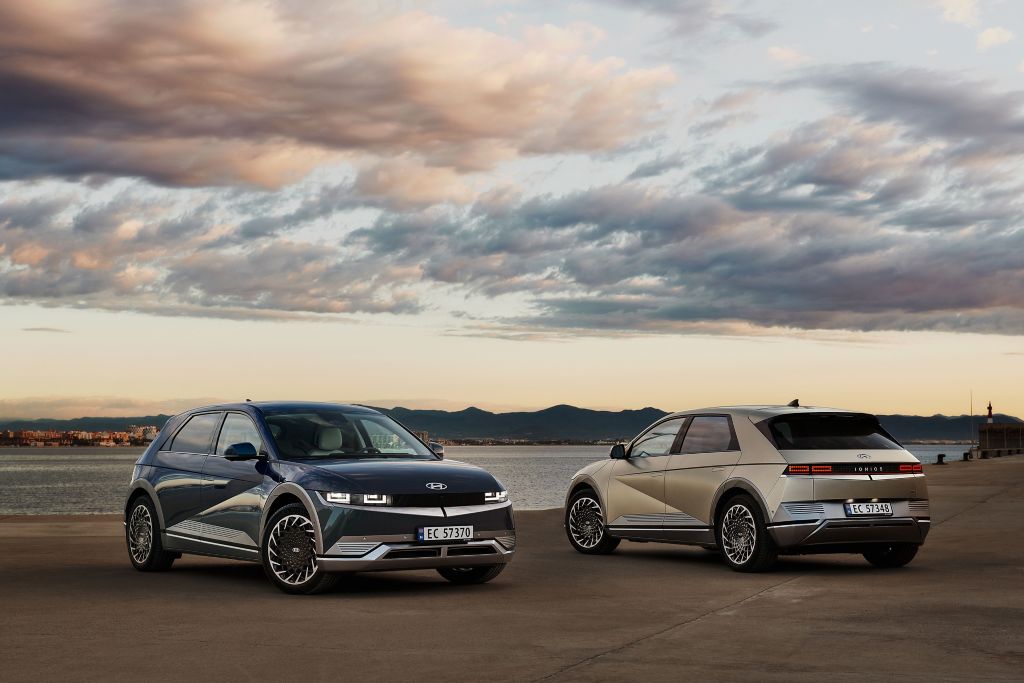
The IONIQ 5 made our CarEdge list of the 5 best cars to buy in 2022!
Pro:
Cons:
The all-new 2022 Hyundai IONIQ 5 is a uniquely retro electric crossover. You’re sure to get plenty of thumbs-ups at stoplights in this head-turner. It’s under $50,000, and surprisingly available at dealerships today. Hyundai says that the pixelated design draws inspiration from the first car they brought to America, the Hyundai Pony.
Also built on the new E-GMP platform, the Kia EV6’s sibling is as comfortable slamming into curves as it is cruising the interstate. The all-wheel drive variant is adequately powered with 320 horsepower and 446 lb-ft of torque. The AWD IONIQ 5 can get up and go with a 0-60 time of 5.2 seconds. That’s just a hair above the current electric crossover sales champion, the Tesla Model Y.
Range varies from 220 miles up to 303 miles depending on battery size and drivetrain. That’s slightly above average for a 2022 model. It’s important to note that some real-world highway range tests have struggled to get the IONIQ 5 past 200 miles on a charge.
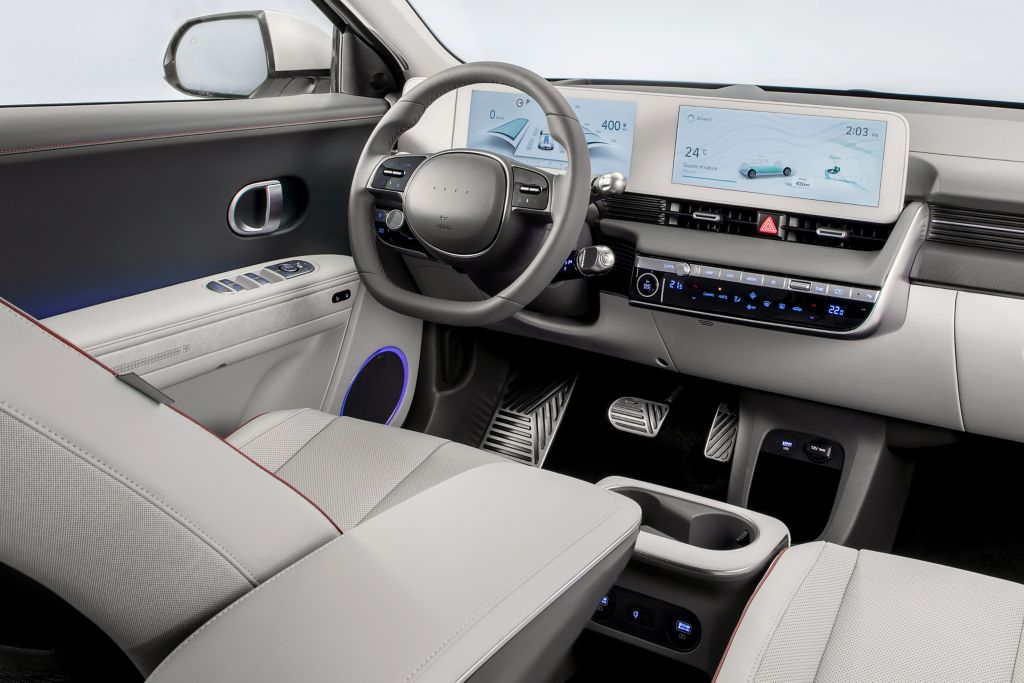
The IONIQ 5 does have one massive advantage over its competitors: charging speed. When you plug in at any Electrify America charging station, the IONIQ 5 can handle up to 230 kW charging speeds. Charging from 10% to 80% (adding 212 miles of range) takes just 18 minutes. The only other vehicle on the market capable of charging that fast is the $75,000+ Lucid Air luxury sedan. The IONIQ 5 has a major charging advantage over the ID.4 and Mustang Mach-E.
The IONIQ 5 is part crossover, part oversized hatchback. That’s not a bad thing. Somehow, Hyundai pulls off this delicate balance in all the right ways. The Ioniq 5’s interior volume (passenger and cargo combined) is 133.7 cubic feet, which is larger than the VW ID.4 and Ford Mustang Mach-E. The roominess has more in common with a Hyundai Santa Fe than a Kona.
Starting at just $40,925 for the 58 kWh smaller battery base model, the IONIQ 5 is available for thousands less than was expected. Most buyers will opt for the larger battery pack (77.4 kWh), which is comparable to other class competitors. With standard rear-wheel drive, the IONIQ 5 SE with the long range battery starts at $44,875. All-wheel drive is available for $3,500-3,900 more. The Limited trim starts at $51,825 and maxes out over $56,000 with all options included.
Starting at $44,990
272 miles of range
Learn more: CarEdge Review of the Tesla Model 3
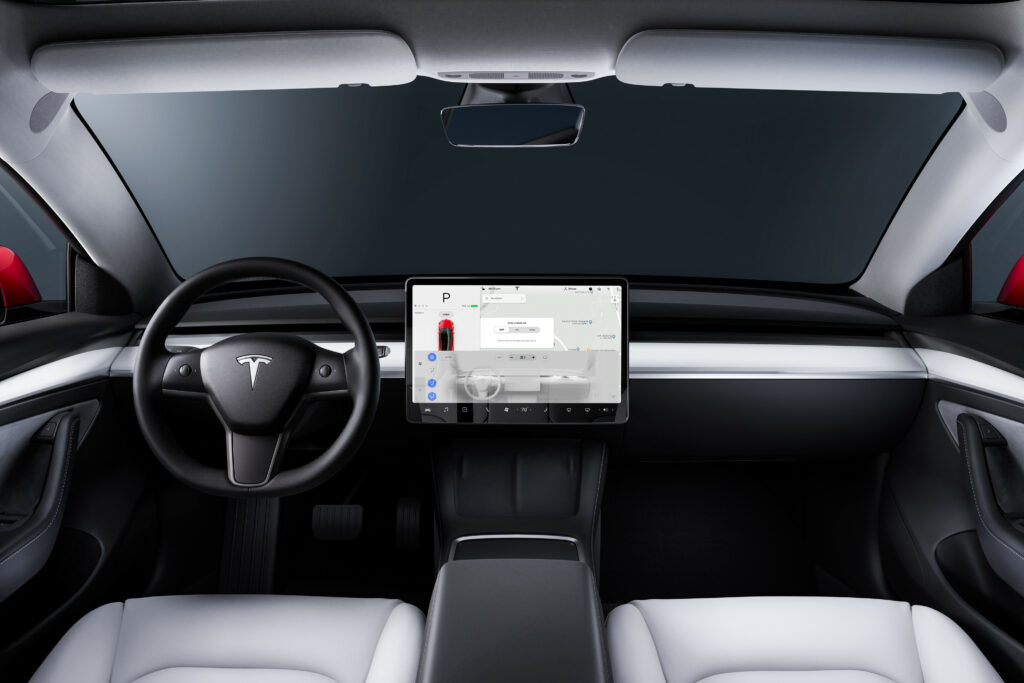
Pro:
Cons:
Say hello to the only Tesla available for less than $50,000. In reality, the 2022 Rear-Wheel Drive Model 3 is the same car as the ‘Standard Range Plus’ variant that the American automaker sold until 2021. Perhaps calling something ‘standard’ just wasn’t on-brand for the luxury automaker.
Don’t get your hopes up if you’re thinking you can get access to Tesla’s Full Self-Driving for under 50 grand. Tesla now charges $12,000 for FSD, which would bring the 2022 Rear-Wheel Drive Model 3 closer to $60,000 after taxes and fees.
Find out everything you need to know about self-driving cars in our CarEdge guide to autonomous vehicles.
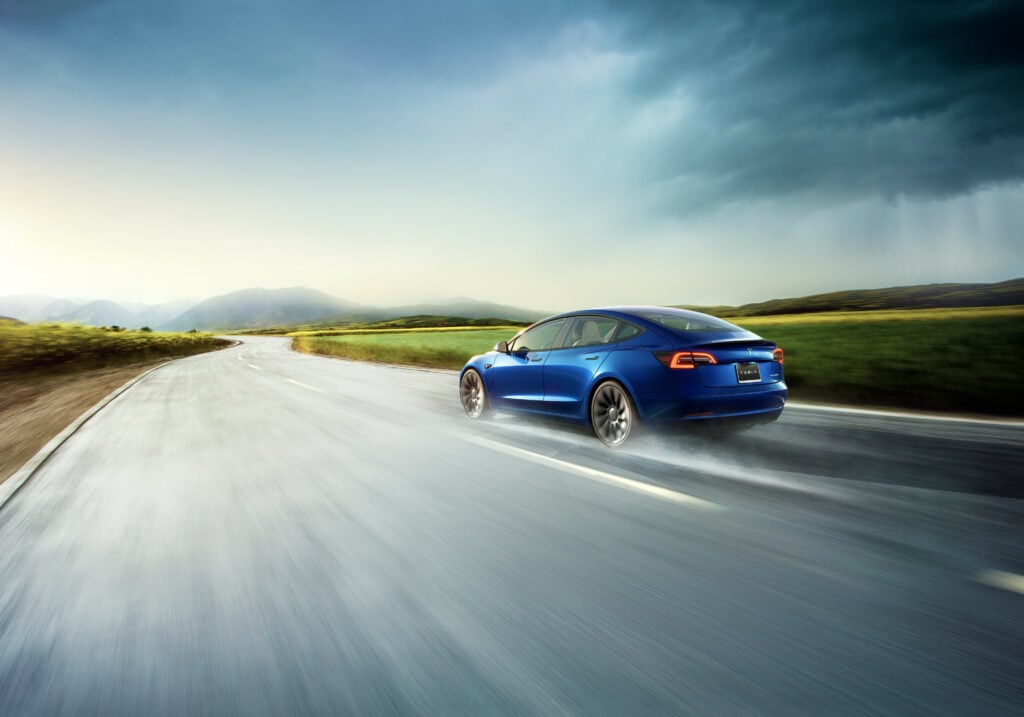
This base trim has received some 2022 upgrades, most notably an increase in range from 262 miles to 272 miles on a charge with the included 18” aero wheels. The 2022 Rear-Wheel Drive Model 3 features new lithium iron phosphate (LFP) batteries which will allow the car to repeatedly charge to 100% without risking as much harm to the life of the battery.
The Rear-Wheel Drive Model 3 is powered by a single electric motor that produces 296 hp and 277 pound-feet of torque. This sedan powers to 60 mph in just 5.8 seconds, not bad for a base trim.
At a Tesla Supercharger, its 60 kWh battery pack can accept up to 170 kW when nearly empty. In the real world, that means charging from 10-80% (adding 190 miles of range) takes about 26 minutes.
The 2022 Tesla Model 3 Rear-Wheel Drive now sells for a notoriously non-negotiable $44,990, plus the $1,200 destination and doc fee. So the cheapest Tesla is now $46,190. Just a year ago, it was $38,190.
Starting at $34,000
258 miles of range
Search hundreds of Hyundai Kona EVs for sale today at CarEdge Car Search!
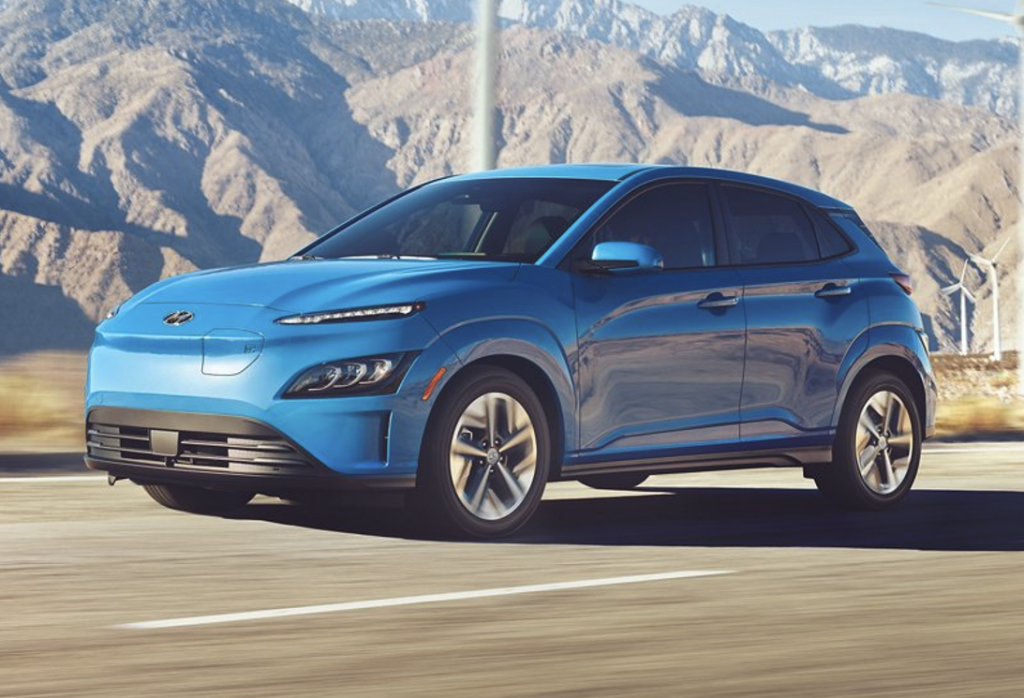
Pro:
Cons:
Hyundai’s forgotten electric vehicle should not be overlooked by those in search of a very affordable entry into electric mobility. The 2022 Hyundai Kona EV may not look all that attractive, but it has decent range and room to fit most lifestyles.
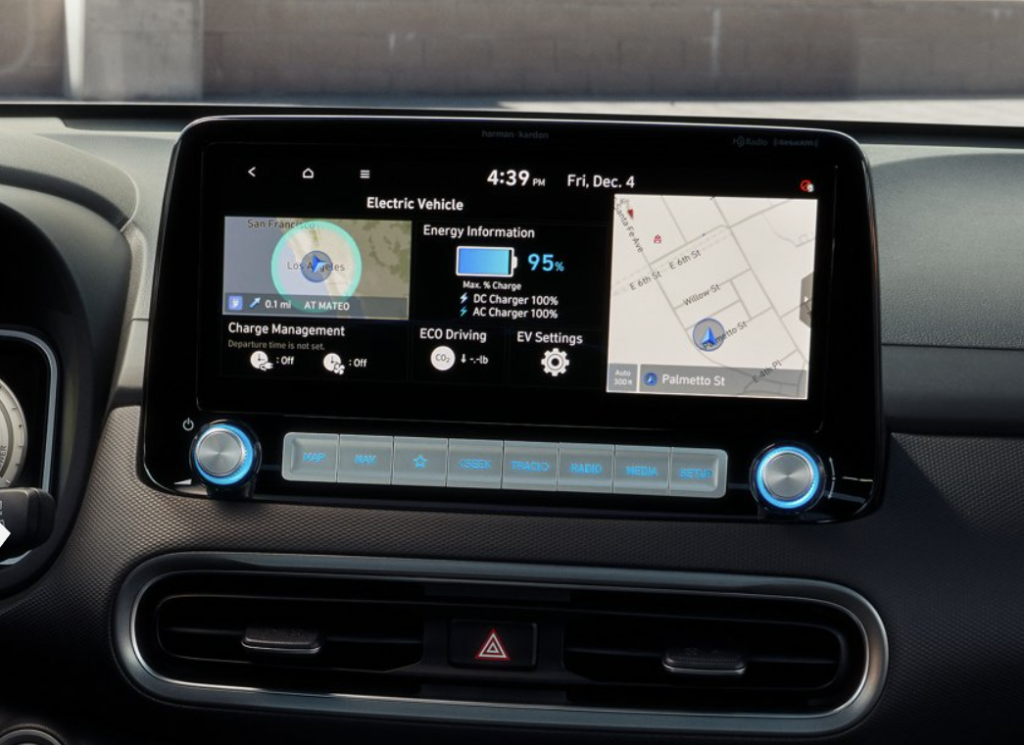
For just $34,000 before incentives, you can become the owner of the original Hyundai EV. This front-wheel drive subcompact crossover gets 258 miles on the charge, exceptional range for a budget EV. Some owners get over 275 miles on a single charge. The Limited trim, top-of-the-line option comes in at $42,500.
If you plug in at home, charging to 100% from a 240-volt dryer outlet will only take you about 9 hours from 10% state of charge. That will get you a full battery overnight while you’re sleeping. At a DC fast charger, the Kona is behind the competition. In 47 minutes, the Kona Electric charges from 10% to 80% capacity.
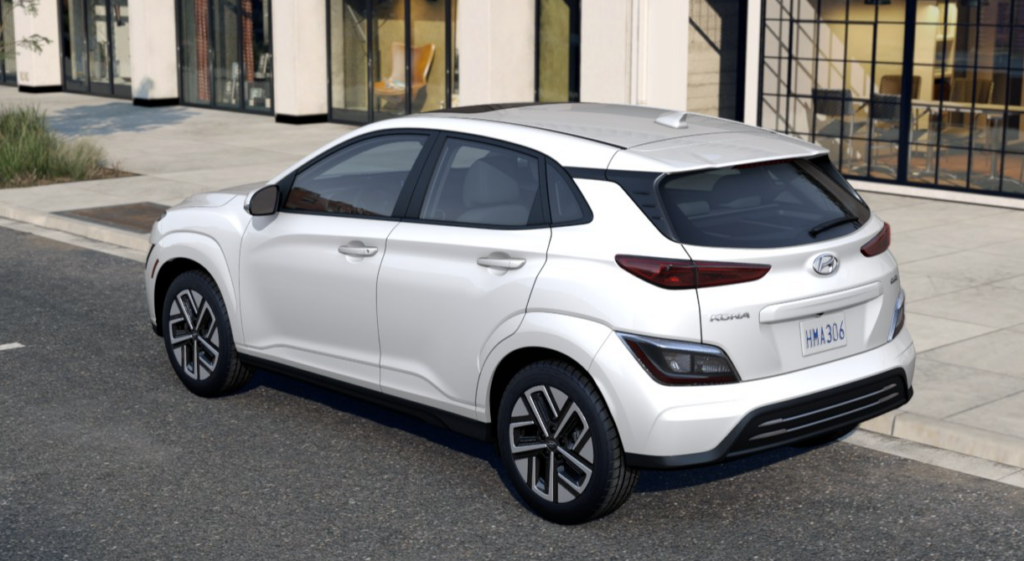
If you’re more of a Kia lover, we have great news. The Kia e-Niro is basically the Kona Electric with a Kia face.
Due to the Kona Electric’s charging faults, this would not be a great road-tripping vehicle. But if you’re looking for cheap electric cars perfect for zipping around town, this is a great deal not to be overlooked.
Available in 2023, but you can reserve one now.
Learn More: CarEdge review of the Fisker Ocean
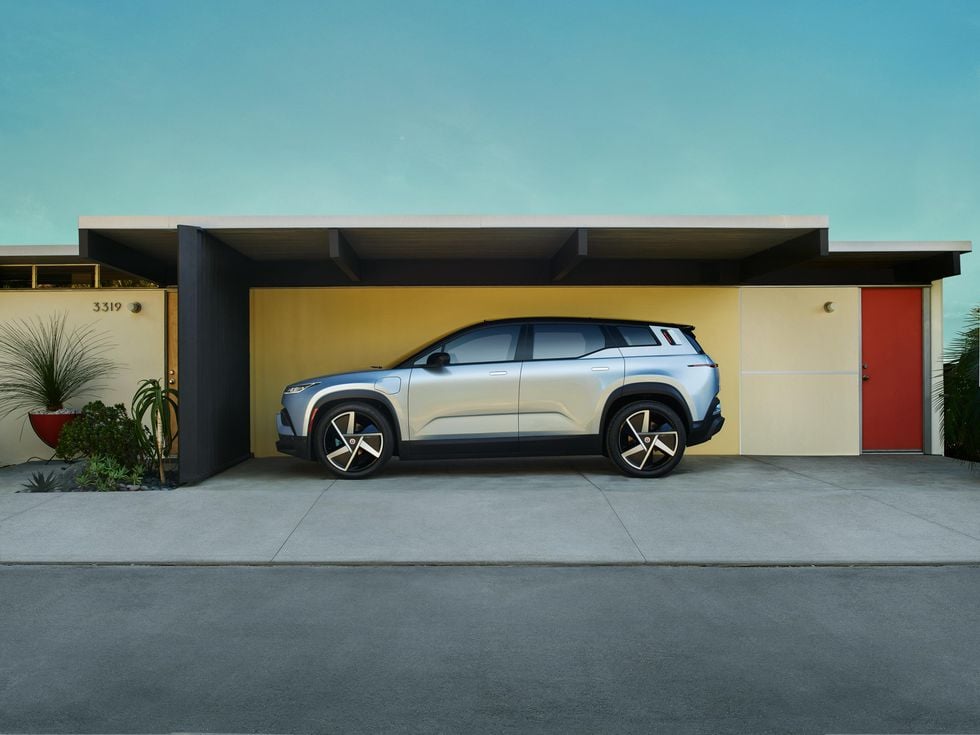
The Fisker Ocean sure does promise a lot. Will it deliver? At just $37,000, Fisker’s all-electric brand quotes 250 miles of range for the entry-level Fisker Ocean crossover. The 2023 Fisker Ocean didn’t make our official list for a few reasons. It hasn’t been produced yet, and delays have pushed the start of production back to November 2022. Fisker says they have 32,000 reservations in the books, so if you’re looking to buy one, it may not be possible until mid-2023. Furthermore, the more capable and sporty Fisker Ocean trims start at $50,000.
You may be wondering where the Chevrolet Bolt and Nissan Leaf are on this list of cheap electric cars. The Leaf is one of the originators of the EV segment, having started it all back in 2011. However, Nissan has regrettably not invested in range or battery performance upgrades over the years. It’s failing to keep up with the growing competition.
The 2022 Nissan Leaf S gets just 149 miles of range and charges quite slowly at between 50 and 100 kilowatts at a fast charger. It is the MOST affordable electric vehicle, with prices ranging from $27,400 to $37,400, however we can’t recommend an EV that leaves the lot at a disadvantage. As electric vehicles come to market with 250 to 400 mile ranges, how will the Leaf retain any resale value?
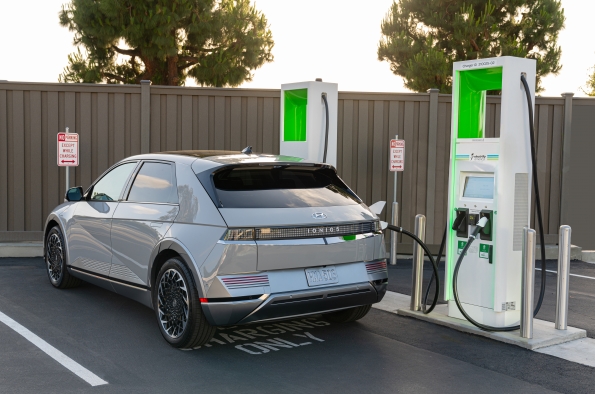
And then there’s the Chevrolet Bolt. It’s affordable and even looks okay with the recent facelift. While it’s true that the recall fix is giving Bolts brand-new, modernized battery packs, the reliability of the Bolt has taken such a hit that it’s too great of a financial risk for today’s consumers to get behind the wheel worry-free. You don’t want your $31,000 purchase to be a symbol of unprecedented fire risk. What would it take to change my mind? At this point, a few years of problem-free driving. Until then stay away from the Chevrolet Bolt. As you can see, there are plenty of other affordable electric vehicles out there in 2022.
Follow the money. Automakers are going all-in on electric vehicles in 2022 and beyond. The consumer benefits as competition rises, so perhaps affordable EVs are here to stay. If you’re looking to go electric in 2022, you don’t have to buy a Tesla, Nissan Leaf or Chevy Bolt. Every automaker is racing to become the next big thing in the world of EVs.
Some parting advice: consider all options, and test drive as many electric vehicles as you can. You’ll be amazed at what’s out there, and even more amazed at what’s to come.